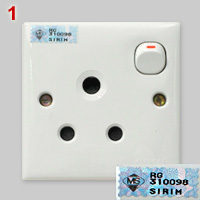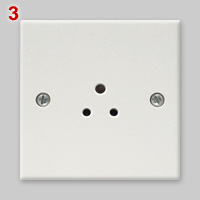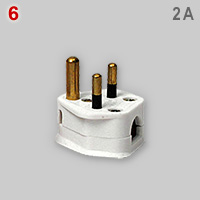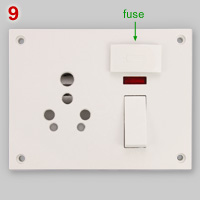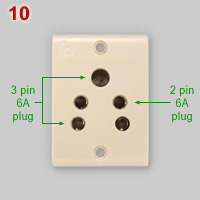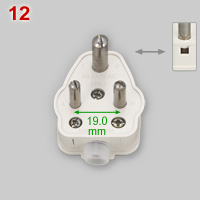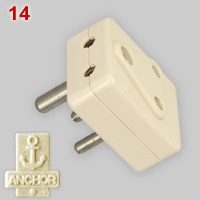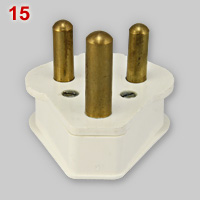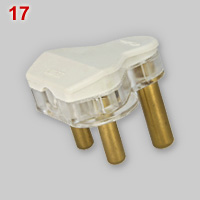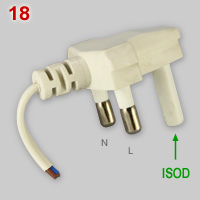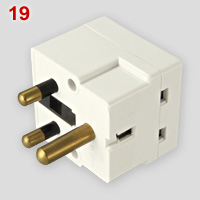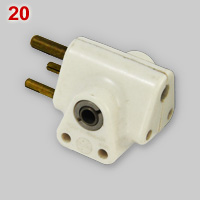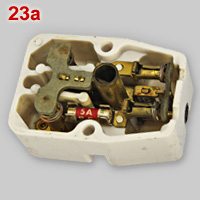| 8, 9 |
Two types
of Indian sockets that can be used for either 16A or 6A plugs (see image nos. 10 an 11) .
Although fully comparable to BS 546, Indian IS 1293 plugs and sockets
are rated at 240V - 16A or 6A, rather than 15A and 5A. Both types of
sockets have safety shutters. Socket no. 9 has also a fuse
and control light. The fuse is not hard wired; it is up to the
electrician when installing the socket to wire the fuse (or not). Switch and fuse are not compulsory.
|
| 10 |
Indian 6A
- 240V socket that can be used for earthed 6A plugs (3-pin, see no. 12) or non-earthed 6A plugs (2-pin, see no. 13). The spacing
between L
and N pins of earthed and non-earthed plugs differ. This is intrinsic
to all BS 546 based plugs (see South
African gallery for data).
|
| 11, 12 |
IS
1293 16A plug (no. 11), and 6A (no. 12) plugs.
The green arrows indicate the spacing between line (left) and neutral
(right) pin. Also 3-pin IS 1293 plugs have an inspection hole to check
earth pin wiring (see insets; compare with no.7). |
| 13 |
Non-earthed
6A plug. This 2-pin plug is similar to the BS 4573 shaver plug, but
lacks the partial insulation of the pins.
|
| 14 |
IS
1293 6A adapter plug for one earthed plug (as no. 12) and two not
earthed plugs (as no. 13). {MSt}
Manufacturers: Anchor Electricals PVT.LTD , India (nos. 8, 10-14) and
CPL
Pigmy, India (no. 9). |
note
|
Pin spacing (centre to centre) differs
somewhat from data given in BS 546 table
below. Construction details of some plugs allow quite some tolerance in
pin spacing.
|


